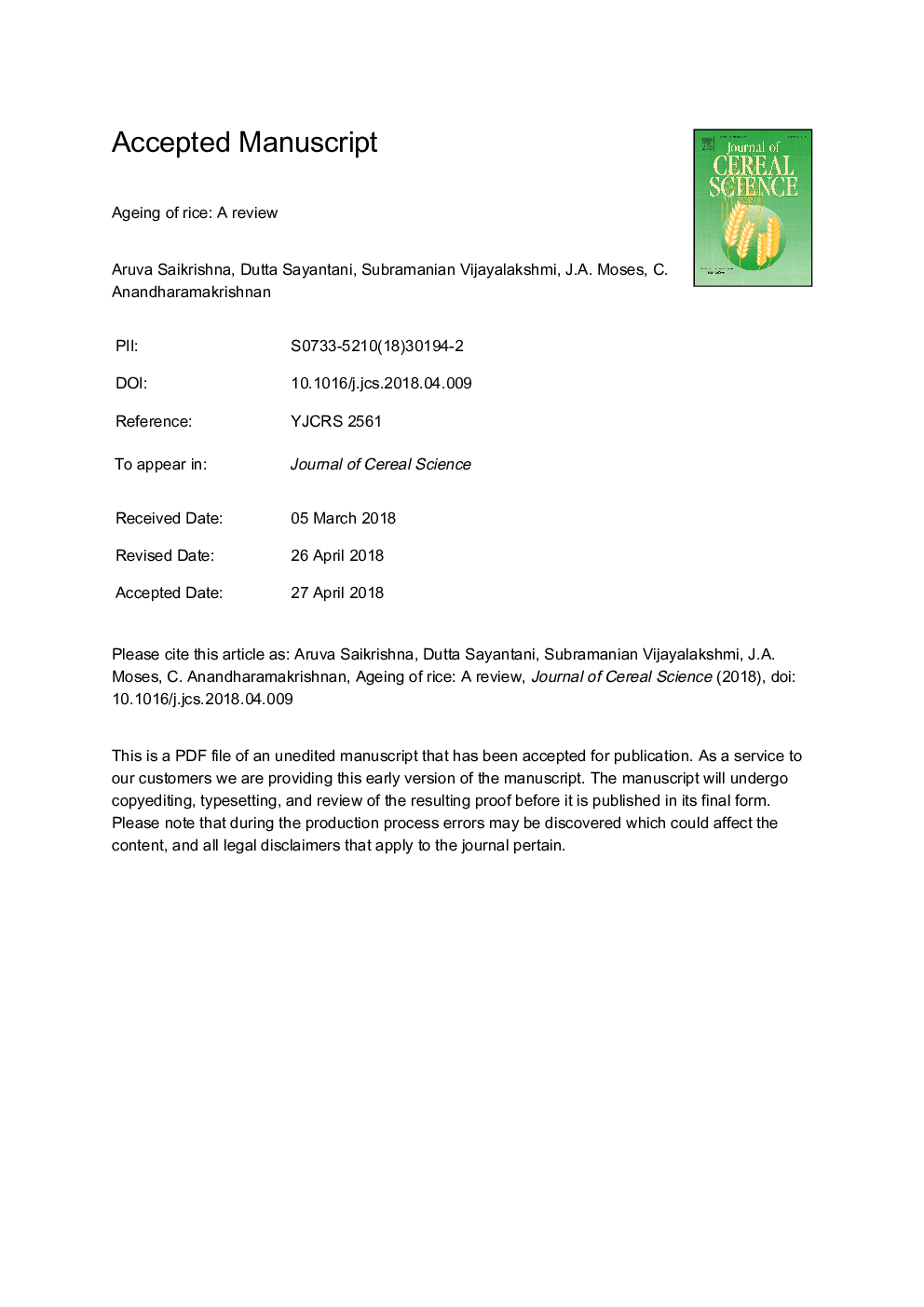| Article ID | Journal | Published Year | Pages | File Type |
|---|---|---|---|---|
| 8881298 | Journal of Cereal Science | 2018 | 40 Pages |
Abstract
Ageing is an intricate phenomenon that starts at pre-harvest and lasts until consumption; but incompletely understood till date. During ageing, significant changes occur in the physicochemical, sensory, cooking and pasting properties of rice. Most changes are time and temperature dependent and their effects on grain quality are irreversible; mostly being beneficial. Aged rice has better commercial value, owing particularly to improved milling yield, higher consumer preference in terms of cooked rice texture, flavor and associated parameters. Natural ageing through conventional processes requires undesirably long storage duration, in addition to associated higher operational and maintenance costs of the warehouse. Alternatively, artificial ageing of rice has been investigated by researchers to achieve similar results in lesser time and lower cost. This review discusses the changes that occur during ageing of rice, and the methods for artificial ageing. The exposition attempts to highlight a comparative evaluation of various techniques and their scopes. Important attributes to identify quality aged rice have also been included to provide an in-depth idea about the topic.
Related Topics
Life Sciences
Agricultural and Biological Sciences
Agronomy and Crop Science
Authors
Aruva Saikrishna, Sayantani Dutta, Vijayalakshmi Subramanian, J.A. Moses, C. Anandharamakrishnan,
